Andrew Rule: Tarneit residents fighting back against young thugs
A MONTH after Ecoville Community Park in Tarneit was trashed by young thugs, locals are determined to reclaim their suburb from youth gangs. Andrew Rule visited the community to see how the fightback is gathering ground.
Law & Order
Don't miss out on the headlines from Law & Order. Followed categories will be added to My News.
TO an outsider, the community centre park in suburban Tarneit might not look great — not yet, anyway. But to locals determined to reclaim it from youth gangs who invaded the place over the past year, it suddenly seems much better.
For now, the bad guys seem to be lying low and the good guys winning — but the battle for the Ecoville Community Park is barely begun, let alone won.
The fightback began after Christmas when the damage done by the young and the lawless became so appalling it made headlines still resonating around the country, sparking a war of words between federal and state politicians, police and lawyers, even an injudicious judge.
Photographs showed the shattered plate glass windows in the park’s graceful architect-designed community building, ruined with graffiti, smoke stains and scorch marks from random fires lit inside, smashed plaster walls and the ankle-deep litter of cigarette packets, bottles, spray cans and drug paraphernalia.
BLIND EYE TO TOP COP’S WARNING ON AFRICAN CRIME
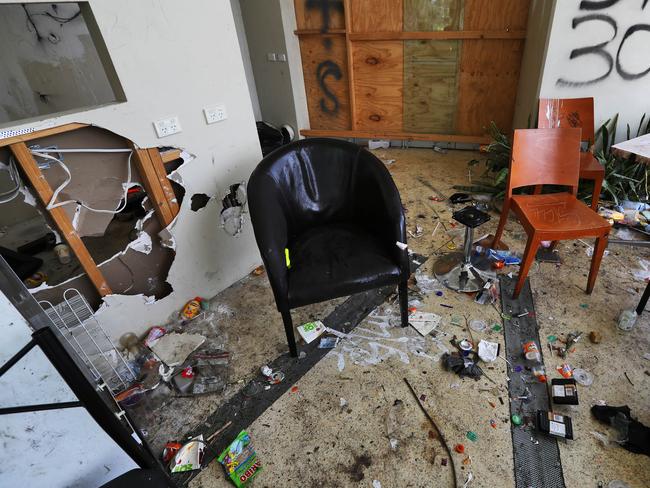

When police chief Graham Ashton toured the district recently he had to concede what street police have been telling their command for far too long: anti-social Sudanese youths have turned some places into no-go zones for ordinary citizens.
Among local police, the community park in Cindia Crescent had the reputation as the hottest crime spot in Wyndham municipality, a big area with its share of drug-related violence and theft.
Why Tarneit and its community-owned park? One reason is that the park — run by a body corporate — had become run down and overgrown with weeds and shrubs that harboured troublemakers.
The park, set up by the developers to attract buyers to the surrounding estate, has mounds and hollows and an open amphitheatre not clearly visible from the street — a great idea on a drawing board but an ideal hiding place for those who want to vandalise, drink, take drugs and terrorise local residents.
The less that local families used the park and community centre (even though paying an $800 annual body corporate fee) the more the local delinquents flocked there.
ANDREWS GOVERNMENT LEADERS MIA DURING GANGS CRISIS
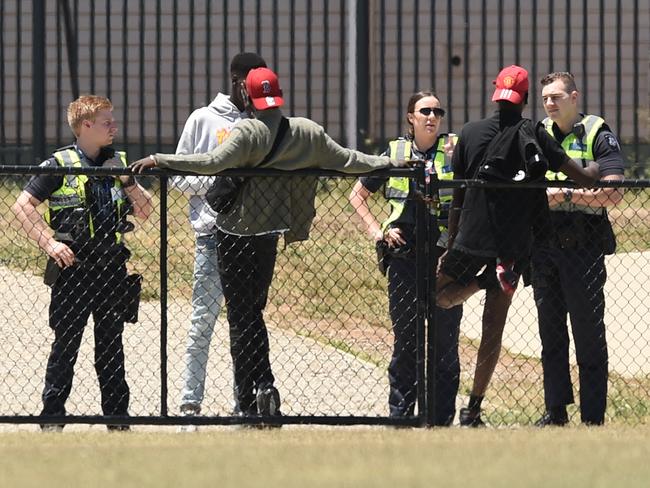

One thing led to another into a downward spiral. No one stepped in to stop it because, perhaps, that would require strong law enforcement and more political will than the State government and senior police could muster.
But the mood is changing in Tarneit.
“It was a jungle until two weeks ago,” says Kebir, an Indian accounting student who shares a rented house just over the road from the notorious community centre building. “But now it is almost a park again.”
Kebir, who works in a Keilor Downs fruit market when not studying in a city college, is relieved about the changes he’s seen across the road this month.
He moved into the street last August — and regretted it almost immediately, he says, when he realised a mob of Sudanese youths regularly gathered directly across the street from his rented house and went out of their way to offend, intimidate or injure other ethnic groups.
“They were mad, crazy teenagers,” Kebir says. “They smashed bottles on the road outside our house. One day about 15 of them surrounded us when we got out of a car. Why? Because they said we were looking at them.
“Last August they lit paper and held it up to the fire alarms (in the community centre) and then the wall caught fire. My brother rang the fire station but they didn’t come. That was August 29.”
POLICE VOW TO TARGET OUT-OF-CONTROL TEEN ‘STREET GANGS’
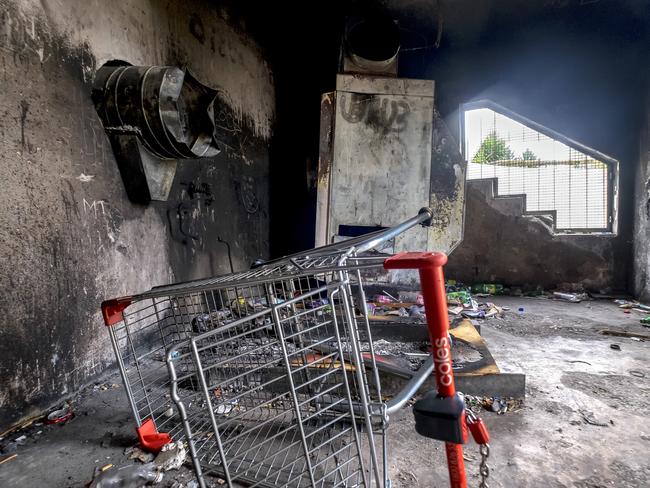
It is not hard to believe the polite and mild-mannered student when he says he and his friends would never provoke a large number of drunk and aggressive youths, most of them much bigger.
Walk into the community centre and you can see the effects of a clean-up operation — and see how bad it was and how big the job ahead still is.
The filthy toilets are still littered with the little plastic “baggies” that illicit drugs are sold in. But that isn’t hard to fix.
The plaster walls are still gaping and ragged where they have been kicked in; plywood sheets fill the gaps where expensive plate glass window walls have been smashed. But the ugly graffiti and smoke stains photographed and broadcast in December were painted out by volunteers at a community working-bee on January 9.
There’s plenty more to do. Park benches have been stripped of their timber slats, leaving only the stainless steel frames. Feet crunch on a “gravel” of glass fragments and there are still empty bottles and papers lying around in the weeds. But hundreds of others have been picked up.
Apart from the crime rate, weeds seem to grow better than anything in Tarneit. The front yard and nature strip of every other house is knee-high with them, maybe a sign that people are staying indoors. Garage doors and security screens tend to be locked shut. Few people walk the streets.
‘I’LL F---ING KILL YOU’: TARNEIT RESIDENTS LIVING IN FEAR
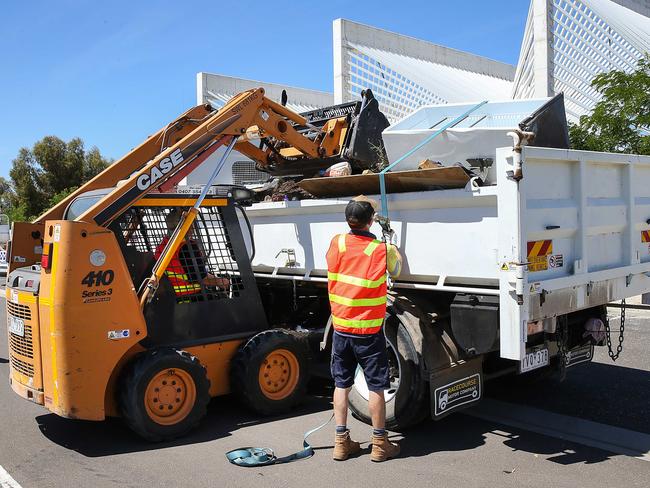
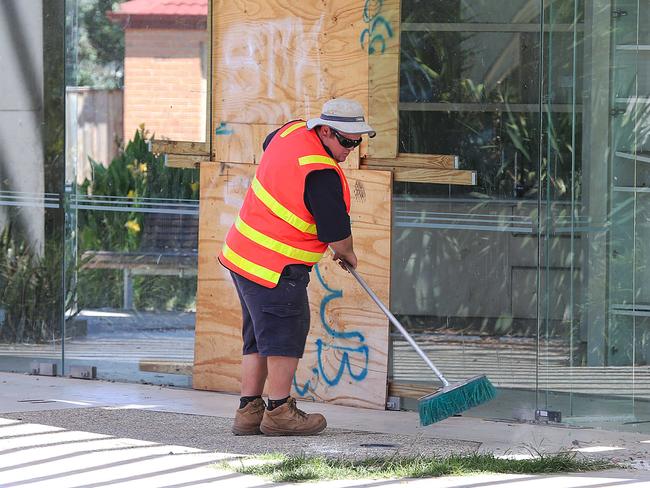
On the other side of the community centre, a corner house is half hidden by milk thistles, wild oats and other weeds, growing up through the crushed rock an alleged landscaper scattered around after the builders finished.
The neglected corner worries the closest neighbour, a middle-aged Indian woman who moved in with her adult sons last year. She now regrets moving from her previous home in Ormond. Last Wednesday she called the council ranger because she saw a snake disappearing into the neighbouring “jungle” a few metres from her entrance.
She is not sure what sort of snake it was but in India nearly all snakes are deadly, so she’s not keen to take chances. She’s not sure who lives in the rented house next door and isn’t that keen to find out, given the unkempt “garden”.
One reason she doesn’t know any neighbours yet is that she works across town in Doncaster — a two-hour trip by train and bus twice a day. Each train journey begins and ends with the 1.5km walk to Tarneit station.
She didn’t mind that until the night a few weeks ago when a group of African teenagers jumped out at her in the dark and yelled “Yah!” They didn’t rob her but they scared her. She immediately asked her employer if she could do an early shift to avoid travelling after dark.
She points out a couple of houses where “the Africans” live, and turns away quickly when a teenager from one of them saunters past in shorts and singlet, a grey hood and sunglasses hiding his face.
RITA PANAHI: TRIP TO TARNEIT A MUST FOR HEAD-IN-THE-SAND LEFTIES
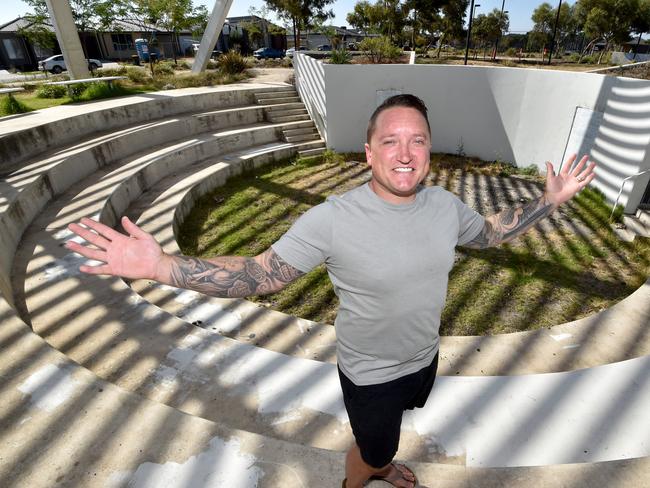

Meanwhile, there is activity in the park. A work crew has moved in with a digger machine and a stump grinder to finish a job started by a man who might become a sort of local hero.
Luke Mitchell is a farmer’s son from Mitiamo, north of Bendigo. He played football and later did arborist work in Queensland before moving to Melbourne to work with animals.
After Luke moved into the area he joined the park’s management committee last year because he was unhappy at paying a body corporate levy for a park that was not just unusable but unrecognisable.
Instead of being the centrepiece of the raw new suburb it was an eyesore and a liability, attracting crime and dragging down house values and the sense of security that is the bedrock of civilised society. It’s hard to resist the comparison with the nearby weed-littered block that harbours snakes.
Mitchell couldn’t help himself once the park hit the headlines at Christmas time. After hearing it would cost $14,000 to hire arborists to trim the trees and shrubs and pull out the weeds, he saved the cost by spending days there cutting and slashing, dragging branches and collecting rubbish.
Then they called in the professional crew with their equipment to grind stumps and finish the clean-up. Next, he says, they hope to remove all the plate glass window-walls from the centre so they can’t be smashed.
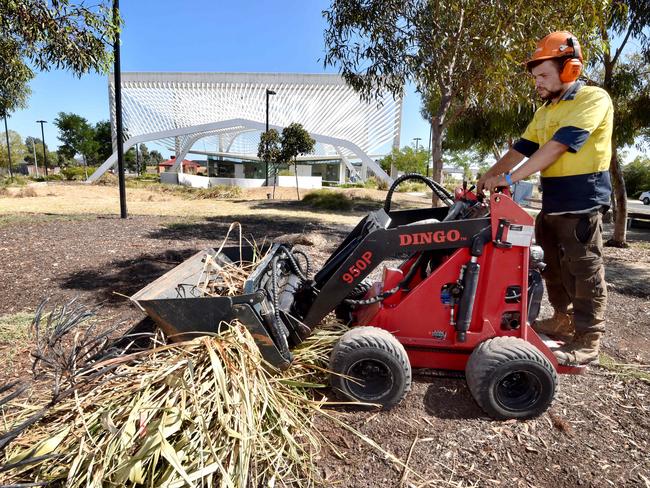
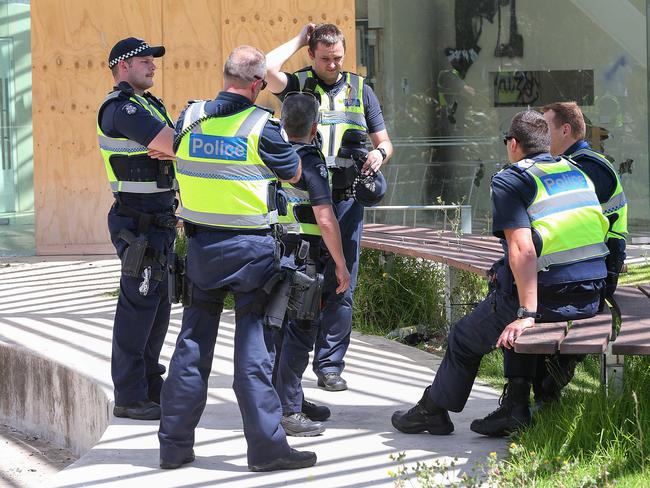
“Each panel is worth $3500 and we’ve replaced at least 15 in 18 months, which means our insurance excess is $50,000,” he says in disgust. “We have spent $180,000 repairing damage in that time — and it’s got to stop.”
The first step, he says, is to make it “uncomfortable” for the invaders. Cutting back tree branches, bamboo, shrubbery and weeds helps, because it means at night police can see across the park when they use their spotlights.
“The significant police presence (since Christmas) has made it possible to clean it up,” he says. He favours commonsense plans. The next step is to remove the back wall of the amphitheatre and do earthworks to blend it into the rest of the park, then fill it in up to the bottom tier to make it harder for people to hide from police.
All the residents need is to be helped to help themselves, he says. Wyndham city council and the State government could save everyone a lot of trouble and expense if they helped remove the design flaws “that have made this park attractive to kids coming here to make trouble”.
The message is simple: if the place slides back into neglect, then the “snakes” will come back and the crime rate will rise and everyone suffers.
It seems that if the government or the council don’t take over the park, it risks being sold for development.
That would mean no park, no tennis court, basketball hoops, amphitheatre and barbecue area. Just more houses.
So there’s the choice the authorities have: streets of fear or a community of hope.
It will be interesting to revisit next Australia Day.

